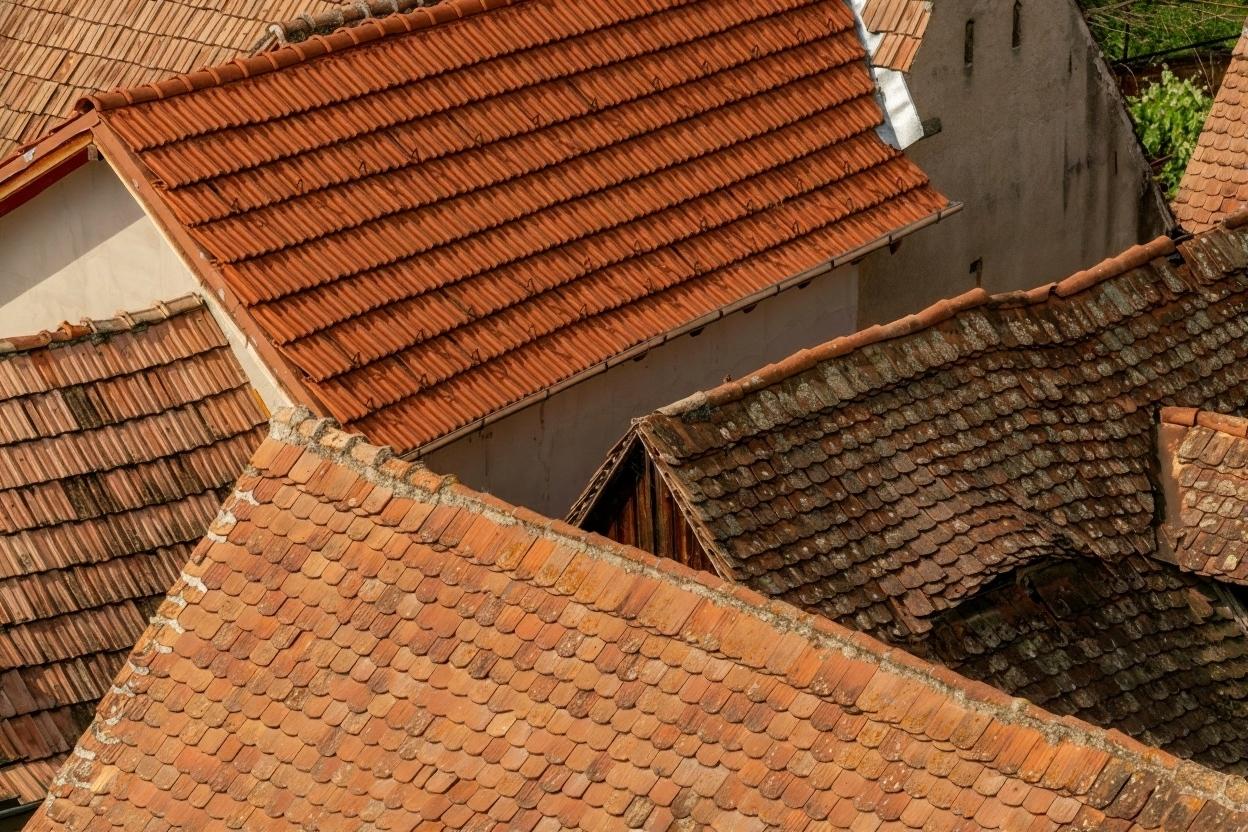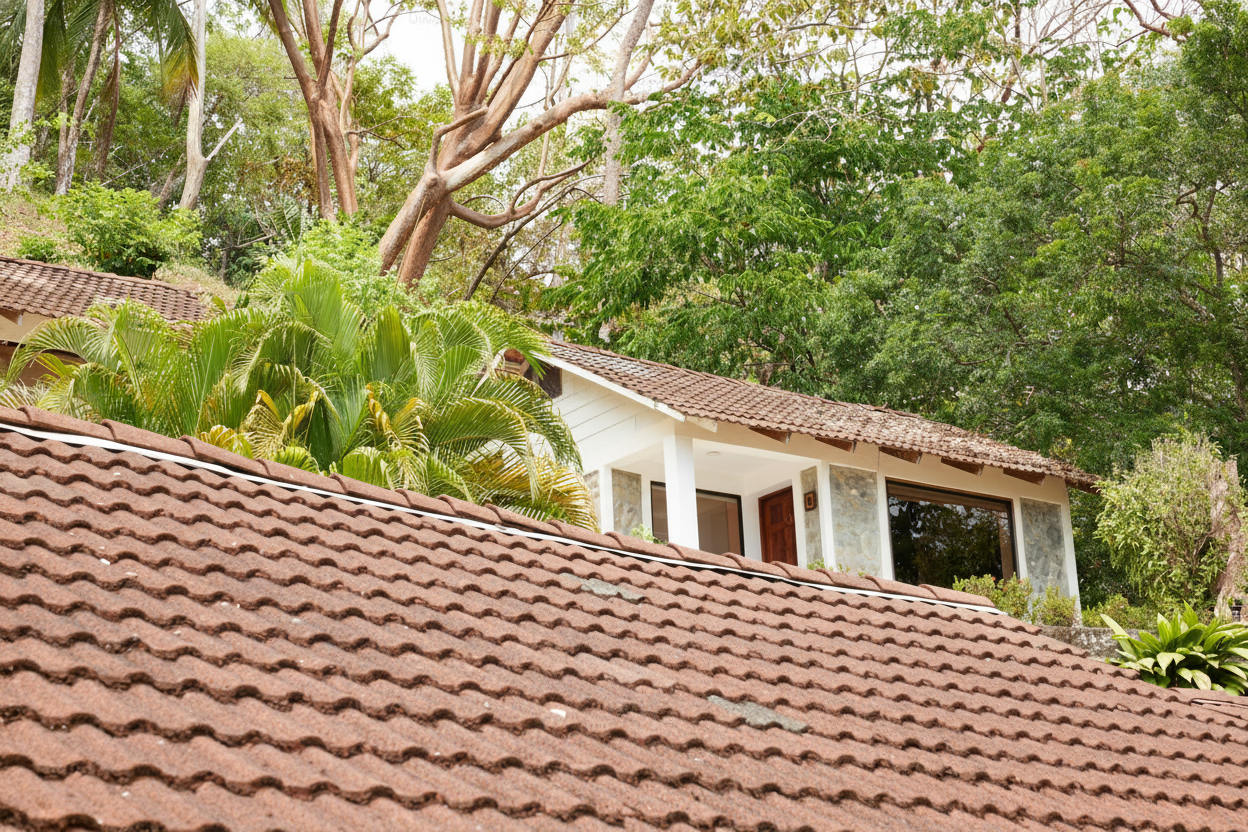
Top 5 Tile Roof Benefits for Your Home in 2025
Maintenance & Repair
Tile Roofing Installation
October 12,2025
Top 5 Tile Roof Benefits for Your Home in 2025

Alt text: Professional roofers installing tile roofing on residential home
Choosing the right roofing material is one of the most important decisions you will make as a homeowner. Tile roofing has become increasingly popular in recent years, and for good reason. This roofing option combines beauty, strength, and efficiency in ways that few other materials can match.
Tile roofs can last 50 years or more when properly installed and maintained, making them one of the most durable roofing options available today.
In this guide, you will discover the five key advantages that make tile roofing an excellent investment for your home. Whether you are replacing an old roof or building new, understanding these benefits will help you make a confident decision.
Why tile roofs outperform other materials
Tile roofing stands out because it delivers exceptional durability that other materials simply cannot match. When you choose tile, you are investing in a roof that can withstand decades of harsh weather while maintaining its structural integrity.
Unmatched longevity and weather resistance
Your tile roof will serve you well for 50 years or longer with proper care. This lifespan far exceeds most other roofing materials, which typically need replacement every 15 to 30 years. The initial investment pays off over time as you avoid repeated replacement costs.
Tile roofing excels in challenging weather conditions. Heavy rain, strong winds, and even hail cause minimal damage to properly installed tiles. If you live in an area prone to severe weather, this resilience becomes especially valuable. Many tile roof types offer Class A fire resistance, providing crucial protection in wildfire-prone regions.
Studies show that tile roofs can reduce your cooling costs by up to 20% compared to traditional asphalt shingles due to their natural thermal properties.
Energy efficiency that lowers your bills
Tile roofs naturally regulate indoor temperatures through their thermal mass properties. The material absorbs heat slowly during the day and releases it gradually at night, keeping your home cooler in summer and warmer in winter.
This temperature regulation translates directly to lower energy bills. Your air conditioning system works less hard during hot months, and your heating system runs more efficiently in cold weather. Over the years, these savings add up significantly.
The reflective properties of tile roofing, especially lighter colored options, bounce sunlight away from your home rather than absorbing it. This reduces the heat load on your roof and helps maintain comfortable indoor temperatures. Learn more about tile versus shingle performance to see the energy efficiency differences.
Beautiful design options for every home style
Your roof plays a major role in your home’s curb appeal. Tile roofing offers versatility that lets you match virtually any architectural style, from Mediterranean villas to modern contemporary homes.
Aesthetic variety and lasting beauty
You can choose from numerous tile styles, colors, and profiles. Spanish tile roofs create a classic Mediterranean look, while flat concrete tiles suit modern designs. Terracotta options provide warm, earthy tones that never go out of style.
The timeless appearance of tile roofing maintains its beauty for decades. Unlike materials that fade or deteriorate quickly, tile keeps its color and texture throughout its long lifespan. This enduring beauty increases your property value and makes your home more attractive to potential buyers.

Alt text: Homeowner standing in front of tile roof home with excellent curb appeal
Low maintenance and environmental benefits
Once your tile roof is installed, you will appreciate how little maintenance it requires compared to other roofing materials. This practical advantage saves you time and money over the years.
Simple upkeep requirements
Tile roofing resists rot, insects, and fungal growth naturally. You will not deal with termite damage or wood decay issues that plague other materials. Regular tile roof cleaning and periodic inspections keep your roof in excellent condition.
If damage occurs, you can replace individual tiles rather than large sections. This targeted repair approach costs less and takes less time than other roofing fixes. Understanding how to walk on your tile roof safely helps you perform simple maintenance tasks.
Tile roofing materials are recyclable and often made from sustainable clay or concrete, reducing environmental impact while providing superior performance.
Sustainable roofing choice
Many tile materials come from sustainable sources like clay and concrete, both of which can be recycled at the end of their long service life. This sustainability appeals to environmentally conscious homeowners who want to reduce their carbon footprint.
The extended tile roof lifespan means less material ends up in landfills. Combined with energy savings that reduce fossil fuel consumption, tile roofing represents one of the greenest choices available.
Important factors to consider
Before committing to tile roofing, you should understand a few key considerations that affect your decision.
| Factor | Consideration | Impact |
|---|---|---|
| Initial Cost | Higher upfront investment | Offset by longevity and low maintenance |
| Structural Support | Heavier than some materials | May require reinforcement |
| Installation | Requires experienced professionals | Ensures proper performance |
| Climate Suitability | Excellent in most climates | Particularly ideal for warm regions |
The weight of tile roofing requires adequate structural support. Your home’s framing must be strong enough to handle the load, which may mean reinforcement in some cases. Professional tile roof installation ensures your structure can support the material safely.
While tile roofing costs more initially than options like asphalt shingles, the investment makes financial sense over time. You avoid repeated replacement costs, enjoy lower energy bills, and benefit from increased home value. Consider the total cost of ownership rather than just the upfront price.
Make the right roofing decision for your home
Tile roofing delivers unmatched durability, energy efficiency, and timeless beauty that few materials can rival. The higher initial investment pays dividends through decades of reliable performance, minimal maintenance, and lower energy costs.
You now understand the five major benefits that make tile roofing an excellent choice: exceptional durability, energy efficiency, aesthetic appeal, low maintenance, and environmental sustainability. These advantages combine to create a roofing solution that protects your home while enhancing its value and appearance.
If you are ready to explore tile roofing for your home, consult with experienced roofing professionals who can assess your specific needs and guide you through the selection process. The right tile roof will serve you well for generations to come.

